- Home
- MURAnews
- Previous issues
- Spring 2017 - present
- Fall 2022
MURAnews Fall 2022
MURAnews Fall 2022 issue in PDF format / in accessible PDF format
In this issue:
We are also looking forward to our first in-person event since before COVID. The two McMaster Planetarium shows we booked for October 28 are sold out. The planetarium has limited seating, which makes it a great venue for cautious emergence from our COVID crowd-avoidance behaviour of the past two years. I was honoured to be asked to participate in the first annual “McMaster Remembers” on October 5th, a MURA Council is undertaking some significant work this year. We are consulting with the university on the definition of “retiree”, which has become important in light of employees who participate in the group RRSP rather than the defined benefit pension plan. Our objective is to agree on a definition that affords those who leave the university with the intention of retiring to be recognized as such, and to be eligible for supplemental retiree benefits such as retiree parking, library privileges and tuition assistance. Also, we are conducting a review of our MURA constitution, to ensure that we are keeping it up to date. MURAnews is put together by a few hard-working folks who have become very experienced. We are in desperate need of a couple of new retirees to join the group. We need a news editor, and a chair for the MURAnews committee. Please let us know at mura@mcmaster.ca if you wish to find out more. You will not be left alone to fill the role - our experienced folks are happy to teach you the ropes and provide assistance. Susan Birnie News from MURAMURA Holiday Lunch - POSTPONED
MURA Council has reluctantly decided that the annual Holiday Lunch will not be held in December this year. As an alternative, we are working on ideas for holding an outdoor event in late spring that will allow retirees to mingle in better weather. Please watch the spring newsletter for details. Council is not comfortable with holding the planned December event indoors due to the number of participants involved, the room capacity and airflow, the still present COVID risk, and increased event costs that would need to be reflected in the ticket price. The Holiday Lunch has traditionally been a wonderful opportunity to gather and visit with retired colleagues. We hope to offer a Spring event that will allow for that same opportunity – in better weather, economically, and with less likelihood of illness as a result. Retirees in the NewsBy Marcia MacAulay
David Streiner, retiree and Emeritus Professor in the Department of Psychiatry and Behavioural Neurosciences is one of ten professors at McMaster University joining the Canadian Academy of Health Sciences (CAHS) as fellows, the highest recognition of excellence in Canadian academic health sciences. David has a joint appointment in the former Department of Clinical Epidemiology and Biostatistics, now known as Health Research Methods, Evidence, and Impact (HEI). Although trained as a clinical psychologist, he has achieved international recognition as a statistician and epidemiologist and has published many books and articles in those fields. See the Brighter World article: Ten McMaster professors elected fellows of Canadian Academy of Health Sciences. Richard Arthur, retiree, and Emeritus Professor in the Department of Philosophy has been named a fellow in the Royal Society of Canada (RSC) Academy of Science. Fellowship in the RSC represents the highest academic honour in Canada. Richard is the author of numerous ground-breaking articles and books on the German philosopher Gottfried Wilhelm Leibniz. His innovative work on the history and philosophy of science and mathematics in the 17th century has transformed the study of his field. See the Brighter World article: Four McMaster researchers named to Royal Society of Canada.
courtesy of Meanwhile in Canada  courtesy of icanhascheeseburgers.com |
Contacting MURAMail: Gilmour Hall B108, McMaster University, 1280 Main Street West, Phone: (905) 525-9140, ext. 23171 (voicemail is checked once a week) Email: mura@mcmaster.ca |

courtesy of Meanwhile in Canada
Your Money/Your Health
Retiree Benefits
For retirees who are eligible for post-retirement benefits, your benefits booklet is the official document that outlines benefit coverage. It is recommended that you keep the original booklet that you received in your retirement package. You should note that as a retiree, your benefits will be different from those you had as an active employee. It’s important to be aware of any coverage changes.
Changes could include things such as:
- Annual maximums - this is the amount you can claim per benefit in a benefit year (July to June)
- Percentage reimbursed (also known as co-insurance) – This is the percentage of the claim which is eligible to be reimbursed. Coverage levels can vary by benefit.
- Lifetime maximums – this usually applies to things such as travel and orthodontics
Sun Life regularly looks at the claiming and administrative practices of medical and dental health care services and providers. Consequently, from time to time Sun Life may delist services, service providers, or medications, etc. You are encouraged to check to ensure your providers and service information are valid and up to date prior to incurring any major expenses, or you can arrange to get a pre-determination. If the total cost of a product or proposed treatment is over $500, Sun Life recommends you send in a pre-determination to confirm coverage prior to you receiving services. Often the service provider can send this in on your behalf. If you would like to inquire about available coverage for specific items, you can contact Sun Life directly via their website or by phone (1-800-361-6212) or download the “my Sun Life” mobile app. Important updates on Sun Life coverage and procedures can be found on Human Resources’ webpage Sun Life Benefit Information.
Additionally, Human Resources updates the plan booklets periodically. A restated plan does NOT change the plan coverage you were entitled to receive when you retired; the restatement clarifies the coverage and includes any administrative practice changes that may have been made by Sun Life.
General benefits inquiries (including a request for a hard copy of your benefits booklet or claim forms) can be directed to Human Resources:
- Phone: (905) 525-9140, x22247 (222HR)
- Email: hr.mcmaster@mcmaster.ca
- Website: https://hr.mcmaster.ca/retirees/
Parking on Campus
Permit Expiry Renewal Reminder
Retiree parking permits are issued on a 12-month basis and must be renewed annually. Renew prior to your expiry date by email, phone or by postal mail. Your transponder number is on the front of your transponder. If you have questions or have not made a note of your expiry date, please contact McMaster Parking Services by email at parking@mcmaster.ca or at 905-525-9140, x24232.
A note to retirees without parking transponders
Free on campus parking is available to all retirees. To take advantage of this perk, and to view retiree parking access, go to the McMaster Parking Services web page. Due to COVID-19, the Parking Office is accepting permit applications by email only. For further information, please contact Parking Services.
McMaster Photo ID Card
All retirees are eligible for a free McMaster photo identification access card that identifies them as a McMaster retiree. Retirees who do not have a photo ID, either because they still have the older, blue ID card, or because they handed in their photo ID upon retirement, are encouraged to get a McMaster retiree photo ID card that facilitates the following services:
- photo ID
- access control (controlled access to various buildings/labs/stairwells)
- entry into controlled-access staff lounges on campus*
- meal plan (activated in Commons Building 128)
- library borrowing
- use of athletic facilities such as the Pulse (gym)
Please send the following information via email to axiomrep@mcmaster.ca:
- your name
- employee number
- a photo (can be a picture of your government issued photo ID or other appropriate photo)
When your card is ready for pickup, you will receive instructions where and when to attend.
Contact Angie Earl at axiomrep@mcmaster.ca or 905-525-9140, x27416 for further information.
Additional information on retiree photo ID cards is available on the McMaster Security Services’ Technology webpage, in the Photo ID Cards section, under "Retirees".
*If your existing retiree photo ID card does not work for accessing staff lounges, send an email request to axiomrep@mcmaster.ca including the name on your card and the number printed on the back of your card.
Walking and Artistic Endeavours - a Boon to Good Health
A summary of a recent report from the McMaster University Optimal Aging Portal
By John Horsman
Increasingly, the medical profession is advising, even urging, their patients to engage in activities to improve mental and physical health. The advice is not without good reason. Cardiovascular diseases and mental health issues are increasing at, some would argue, alarming rates in western society. Obesity, cognitive impairment, cholesterol levels, dementia, diabetes, mental health issues, arthritis and the list goes on, are all too common and increasing to historic levels.
Detailing the Issues
About 60-70% of dementia is classified as Alzheimer’s disease. In 2020, in excess of 50 million people worldwide were diagnosed with Alzheimer’s including about 6% of people aged 65+. It costs over $1 trillion each year and is the 7th leading cause of death in the United States (US).
Obesity is a major cause of disability and is correlated with cardiovascular disease, type 2 diabetes, sleep apnea, osteoarthritis, clinical depression, and some cancers. It is a growing problem worldwide with studies in 195 countries showing a steady increase in obesity in most of them, and doubling in 73 of them between 1980 and 2015. In those years, on average, 12% of adults in the 195 countries were obese. By 2018, 42% of adults in the US were clinically obese. In 2021, Canada ranked 26th in the world with almost 30% of adults being considered obese.
There are over 100 types of arthritis but the most common are osteoarthritis and rheumatoid arthritis. It becomes more common with age. In Australia about 15% of adults have some form of arthritis while in Canada and the US the figure is 20%. Of those afflicted, 60% are women.
Depression is a common but serious mood disorder. The number one cause of depression is continuing difficulties with life events. It is more common than many realize. The Center for Disease Control and Prevention estimated that almost 20% of Americans had symptoms of depression in any 2-week period in 2019. Conditions that can worsen with depression include arthritis, cardiovascular disease, cancer, diabetes, and obesity.
That seems a rather ominous introduction and a scary litany of life-threatening, even depressing, events with which we older adults have to contend. So, what can be done to boost our overall well-being? What can we do to improve our physiological and psychological health and outlook in a relatively easy and inexpensive manner?
Activities to Boost Well-being
In a September 22, 2022 email from the McMaster Optimal Aging Portal (MOAP), there was an article “Fall activities for older adults that boost well-being”. These activities, of course, don’t have to be confined to the autumn season; they can be undertaken and enjoyed all the year round. The article included a number of activities for mind and body wellness including walking, yoga, trying new recipes, reading, exploring, and perhaps uncovering artistic talents you didn’t know you possessed. I am going to explore in more detail just two: walking and artistic endeavours. Following the Portal’s blog posts and related bibliographies I will summarize some of the more relevant points and take aways, hopefully to help improve both our minds and bodies.
Walking
Let us start with walking. It is an activity we learned and pretty well mastered many, many years ago. Walking is touted as an easy way to get exercise and stay healthy. But what is the evidence that walking is beneficial? A systematic review published in the British Journal of Sports Medicine included 42 studies from 14 countries that measured physiological and psychological results of outdoor walking in groups. The review evaluated nearly 1,900 participants with long-term health conditions including arthritis, dementia, mental health issues, and obesity. Their analysis showed that walking provided a wide range of health improvements including lowering of blood pressure, resting heart rate, cholesterol levels, and body fat. The participants scored better on physical functioning tests and lowered their risk of developing depression. While medications and psychotherapy are the most common and highly effective treatments for depression, walking for exercise is a simple and accessible natural adjunct known to increase endorphins, hormones that improve mood. The authors concluded that walking groups appear to be an effective and safe way to improve one’s health. Another study reported in the Scandinavian Journal of Medicine and Science in Sports found that working people walking 30 minutes at lunchtime felt more enthusiastic and relaxed during their afternoon at work. Just think what a 30-minute walk after lunch might do for us retired folk without the pressure of work weighing on our minds. As people age, especially after 40, Public Health England (PHE) found that the amount of activity people engage in starts to decline, and that 40% of people between 40 and 60 do not manage a brisk 10-minute walk even once a month. PHE noted that physical activity is a vital part of remaining healthy and that inactivity among adults contributes to 1 in 6 deaths in the United Kingdom, the same as smoking.
A cardiologist at the Orlando Health Heart Institute (OHHI) notes that brisk walking is as good as running for cardiovascular health. So, what constitutes a “brisk” walk, you ask? The OHHI suggests “brisk” is taking 100 steps per minute or managing 3 miles per hour (approximately 5 kilometres per hour). You should feel like you’re exercising and breathing a little faster but not so fast as to not be able to talk with your walking buddies. The idea is to get your heart rate up to around 220 beats minus your age. Remember to check with your doctor before starting any new exercise regime and, as with any new activity, start slow and easy and gradually increase the exertion level.
For the more ambitious, you might consider Nordic walking - walking with poles. Poles can make a regular walk into a near full-body workout. It involves your arms, shoulders, chest, and upper back, and burns more calories, yet seems like you are not working any harder than normal walking according to a recent Mayo Clinic Health Letter.
The take away here is that older adults should walk as briskly as possible for as little as 10 minutes a day. That daily walk can reduce the risk of early death by 15%. It is an accessible form of exercise, requiring no special skills or fancy equipment - good walking shoes and perhaps walking poles but that is about it. Oh yes, a nice water bottle would not go amiss either. Some people like music to put a little lilt in their step while others prefer walking and talking with walking partners or simply listening to the sounds of nature around them. Walking poses little (but not no) risk of injury and can be done virtually anywhere. The Fall is a great time to get out in the brisk afternoon sunshine. When the weather turns a little nasty (winter in Southern Ontario is fast approaching, remember) one can walk in the relative comfort of nearby shopping malls, although it is probably best these days to wear a mask and steer clear of the food courts.
Artistic Pursuits
Tired from all that walking? Then what about letting your inner artistic talents burst forth. Loosening your artistic passion need not be restricted to taking up a brush and dabbling in oils or watercolours. Participating in an artistic activity can run the gamut from singing to dancing, creative writing, theatre, photography, arts and crafts, pottery, knitting, musical instrument lessons, wood carving, wood working, and so on and so on. It is only limited by your imagination and possibly budget. The point is that one person’s junk is another person’s art and vice versa, I suppose.
The interaction of arts and health has been a rich source of research for many years. The article in MOAP has a limited bibliography of more recent research for those interested in delving further, but the bottom line or takeaway message is that many retired seniors with more free time (really?), see retirement as an opportunity to get back to their artistic passions.
According to MOAP, participating in any form of artistic pursuit you enjoy can help. Depending on the activity it has positive effects on older adults’ health and well-being including memory, level of creativity, problem solving, reaction time, and better ability to carry out activities of daily living. Participating in group activities like arts and crafts classes or theatre productions can help to reduce loneliness and social isolation. It helps lessen the loss of social interactions that was provided by your work environment.
Studies have examined older adults, quality of life and the effects of various participatory forms of art. Some focus on mental well-being and social isolation while others concentrate on effectiveness of programs on problem solving, learning new skills, cognitive abilities, and activities of daily living. Other research shows that museum programs designed for older adults, can increase socialization and improve their mood. There are museum and art gallery programs to train volunteer docents or guides. There are education programs in art appreciation and hands-on encounters with various museum objects in small group settings under the direction of a lecturer or guide. According to their website, the Art Gallery of Hamilton (AGH) offers experiential encounters for all age groups that are “tactile, social, and accessible to all”. They offer “wellness” programs such as “GOODBODYFEEL Moves”, “Artful Moments: Creative Experiences”, and “Mental Health Zine Workshops”. The McMaster Museum of Art (MMA) offers “free guided exhibition tours”, “academic outreach”, and “visual art-based programs” for all ages. Currently on offer at MMA are more than a dozen programs including “Indigenous Art and Connection to Land”, and “we are all connected” – where participants “consider their connection to individuals, groups and life around them through discussion and interactive with outdoor artwork” on the Mac campus.
If you once enjoyed some artistic pursuit or other, maybe it is time to dust off those dancing shoes, take some turpentine to those old paint brushes, get that piano tuned, or reawaken your inner Fred Astaire, Emily Carr, or Oscar Peterson. So, dance like nobody is watching, splash colour on canvas with wild abandon, or make a demo tape that will dazzle relatives and friends alike.
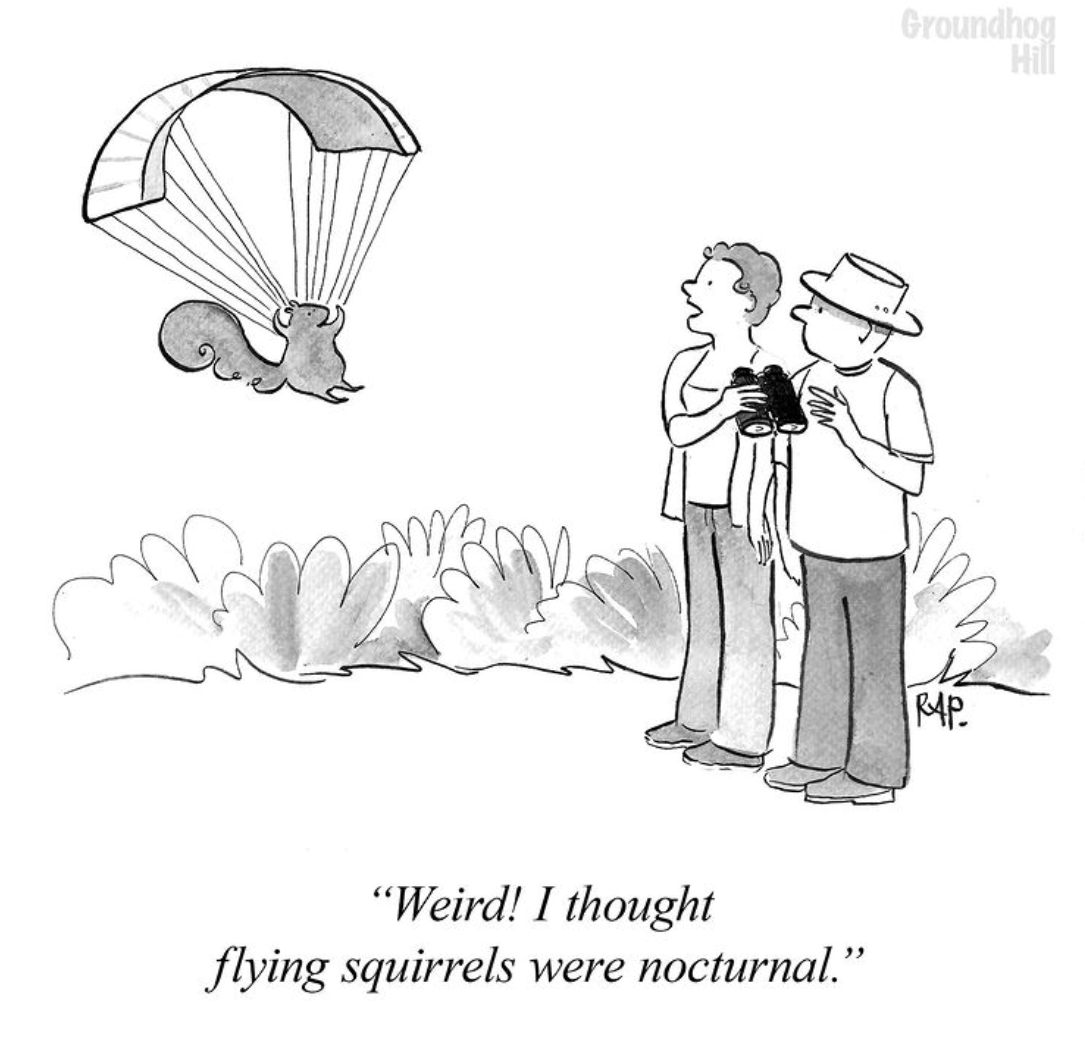
courtesy of Rose Anne Prevec
Instagram: @groundhog_hill
Computer Tips & Tricks
Multi-factor Authentication
More and more these days, online services that require you to sign in to an account (think online transactions with banks, social media, shopping sites, and health records) are requiring users to adopt multi-factor authentication (MFA). If they are not requiring it, they may be offering it as an optional extra layer of protection.
This article will outline what MFA is, how it works to protect your online accounts and data and, finally, how it affects people who use McMaster online services, McMaster email in particular.
When you sign into an online account – a process called "authentication" – you're proving to the service that you are who you say you are. In the past this was accomplished by having you provide a username (to let the service know who you are) and a password (to prove your identity, since, in theory, only you know your password).
Unfortunately, as we’ve heard in the news in recent years, cyber criminals make it their business to steal usernames and passwords by hacking in to secure systems (data breaches), or by “phishing attacks” (luring internet users into revealing their online credentials through deceptive emails or web sites). In addition, if a password is weak (easily guessed) hackers can run a computer program that inputs frequently used passwords until it hits on one that works. Perhaps unbelievably, according to a Cybernews.com study1 of publicly leaked data breaches in 2022, the top five passwords currently in use are: “123456”, “123456789”, “qwerty”, “password”, and “12345”!
The username/password system has declined in security with the rise of cybercrime. This is where MFA comes in. According to Microsoft2, MFA can “prevent 99.9 percent of attacks on your accounts.”
What is MFA?
 MFA, also known as two-step verification, is a practice that achieves a higher level of security than username/password alone by requiring users to provide proof from two or more authentication factors. This extra layer of protection helps prevent hackers from accessing your account even if they have your password.
MFA, also known as two-step verification, is a practice that achieves a higher level of security than username/password alone by requiring users to provide proof from two or more authentication factors. This extra layer of protection helps prevent hackers from accessing your account even if they have your password.
There are three authentication factors that can be used in MFA:
- something you know (e.g., passwords, PINs)
- something you have (e.g., mobile phone, bank card, email address)
- something you are (e.g., fingerprint, facial recognition).
How does MFA work?
An account that uses MFA will ask you for your username and password as usual when you sign into the account, but then prompt you to provide a second factor to verify your identity.
For example, you might be asked to provide your mobile phone number so a numeric code can be sent to you via a text message (“something you have”). You then use this single-use numeric code to complete the sign-in process. If someone tries to log in with your username and password but doesn’t have your phone, they will be out of luck, as they will have no way to get the numeric code. As another example, if you use a mobile device with fingerprint or facial recognition, you might be able to use one of those as your second factor (“something you are”). Some systems have their own authentication apps, such as Microsoft Authenticator, that provide the numeric code.
Depending on the online service, and the settings you have chosen, you may not have to do the second step every time you sign in. It is sometimes only required the first time you sign in on a new app, device, or web browser, or perhaps the first time you sign in after changing your password. Some services may ask you to provide your second factor on a set schedule, for example once every 90 days.
MFA at McMaster
In the McMaster context, MFA is currently used for Microsoft services and applications, including McMaster email. MFA became mandatory for McMaster students, faculty, staff and professors emeriti as of April 2022. Retirees (excluding emeriti) are not required to use MFA but are encouraged to do so. Given the current cybercrime climate, this is excellent advice. I checked the list of recent sign-ins to my own McMaster email account while writing this article3 and found dozens of unsuccessful sign-in attempts originating from places in the US, Thailand, Russia, Turkey, Netherlands and more, making me happy with my decision to implement MFA last fall when it became available!
The McMaster UTS Multi-Factor Authentication page has helpful links, FAQs, and instructions on how to set up and use MFA.
 |
|
Microsoft Authenticator |
- A text message or phone call to your mobile phone
- The Microsoft Authenticator smart phone app
- A phone call to your land line (a great option if you don’t have a smart phone)
The text message and Microsoft Authenticator options send a numerical code which you use to complete the sign-in. The phone call is a recorded message from Microsoft asking you to press the hash key on your phone (#) to verify that it was you who initiated the sign-in request.
You can choose your preferred option in your account settings, and you can have as many options as you want. It’s a good idea to set up more than one option if you can.
In the McMaster environment, you won’t be asked to provide your second factor every time you sign in. You will be asked the first time you sign in from a new location, or on a new device or web browser. After that, you may be asked once every 30 to 90 days, but not so often as to become inconvenient.
A final word
Most cyber security experts recommend the use of MFA whenever possible, especially when it comes to your most sensitive data such as your primary email, financial accounts, and health records. To quote Microsoft.com, “Compromised passwords are one of the most common ways that bad guys can get at your data, your identity, or your money. Using multi-factor authentication is one of the easiest ways to make it a lot harder for them.“
Further reading and information
- McMaster UTS Multi-Factor Authentication page
- National Institute of Standards and Technology: Back to Basics: What’s multi-factor authentication – and why should I care?
References
1Cybernews.com: Most common passwords: latest 2022 statistics
2Microsoft.com: One simple action you can take to prevent 99.9 percent of attacks on your accounts
3This service is available if you log in to your McMaster email account using a web browser. Click on your initials in the upper right corner of the screen and choose “View account” in the dropdown box. In the left panel, choose “My sign-ins”.
Members' Corner
The views and opinions expressed in Members’ Corner are those of the authors and do not necessarily reflect the official policy or position of MURA Council.
Hiking (all) the Mountains of Scotland
By Stephen Walter, Clinical Epidemiology and Biostatistics
In the late 19th century, Sir Hugh Munro, a member of the landed gentry, took it upon himself to document all the mountains in Scotland by walking and riding around the Scottish Highlands himself. Munro created a catalogue of almost 300 mountain peaks, defining a “mountain” as being over 3000 feet with a sufficient distance and altitude drop between it and the next candidate peak. More recently, the Scottish Mountaineering Club has maintained this list. When new surveying data becomes available, corrections to the list are sometimes required, but for some time now the list has included 282 summits. In Munro’s honour, these peaks are now themselves known as “Munros”, and this designation has created a challenge for people to get to the tops of all of them - a process colloquially referred to as “Munro bagging”. (Interactive Munro Map)
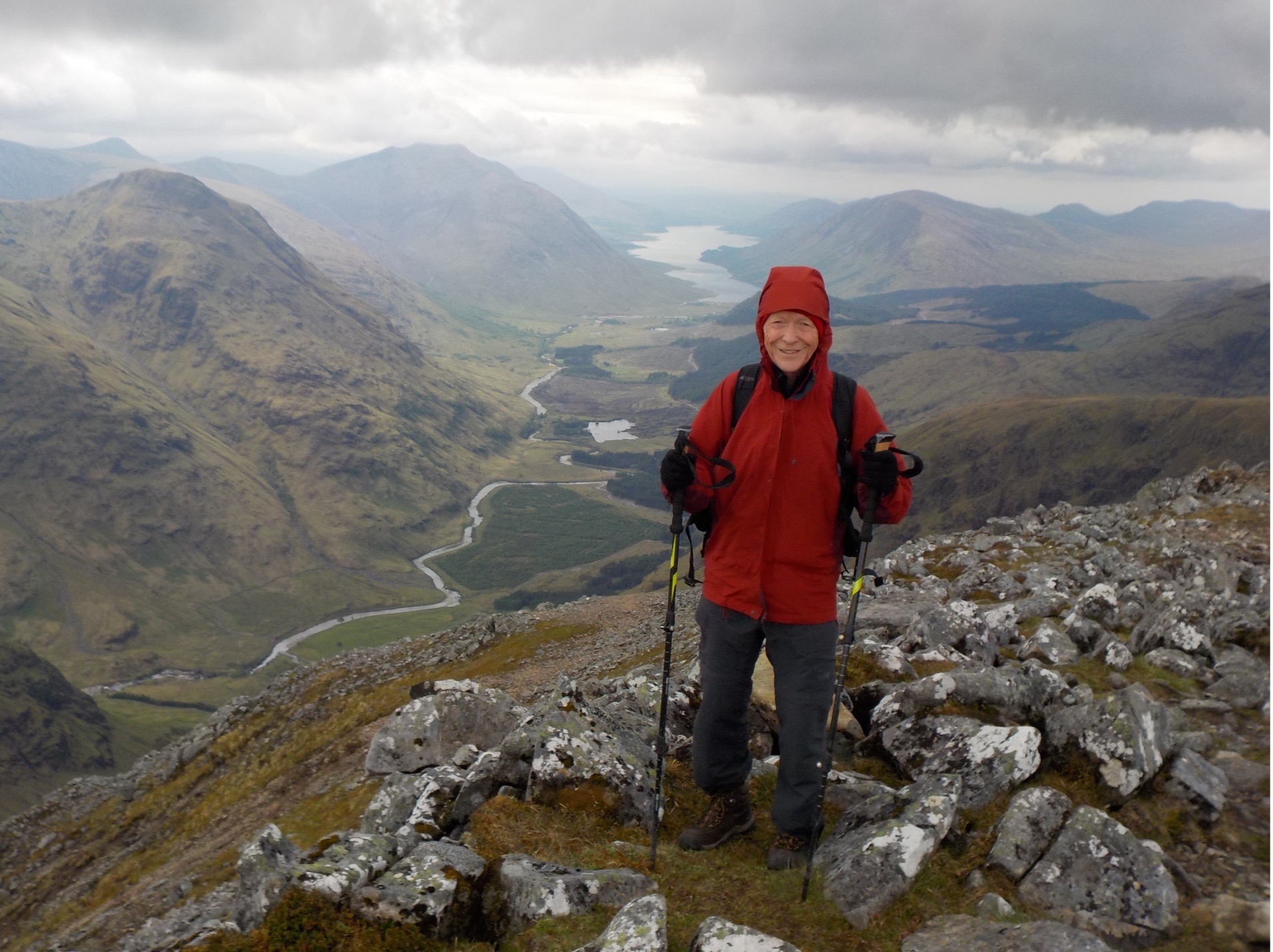 I started hiking in the Scottish Highlands when my girlfriend (now wife) Loraine and I were students in Edinburgh. I “bagged” my first (one of three Ben Mores, this one being near Crianlarich) in 1969, using a day-trip bus organised by a local newspaper. We also joined the Edinburgh University Mountaineering Club, and enjoyed many weekends hiking, often in the winter. We either camped (typically in the snow) or used the basic facilities of a bothy (often an abandoned farm cottage).
I started hiking in the Scottish Highlands when my girlfriend (now wife) Loraine and I were students in Edinburgh. I “bagged” my first (one of three Ben Mores, this one being near Crianlarich) in 1969, using a day-trip bus organised by a local newspaper. We also joined the Edinburgh University Mountaineering Club, and enjoyed many weekends hiking, often in the winter. We either camped (typically in the snow) or used the basic facilities of a bothy (often an abandoned farm cottage).
Although 3000 feet is not high for a mountain by international standards, this is deceiving. Many of the Munros are very remote, in trackless country, and require considerable navigation skills to climb safely. Even on the easier hills, one has to travel equipped with suitable clothing and other resources in order to deal with severe weather or whiteouts that can occur at any time. Regrettably, lives are not infrequently lost on the Scottish hills because of lack of suitable precautions.
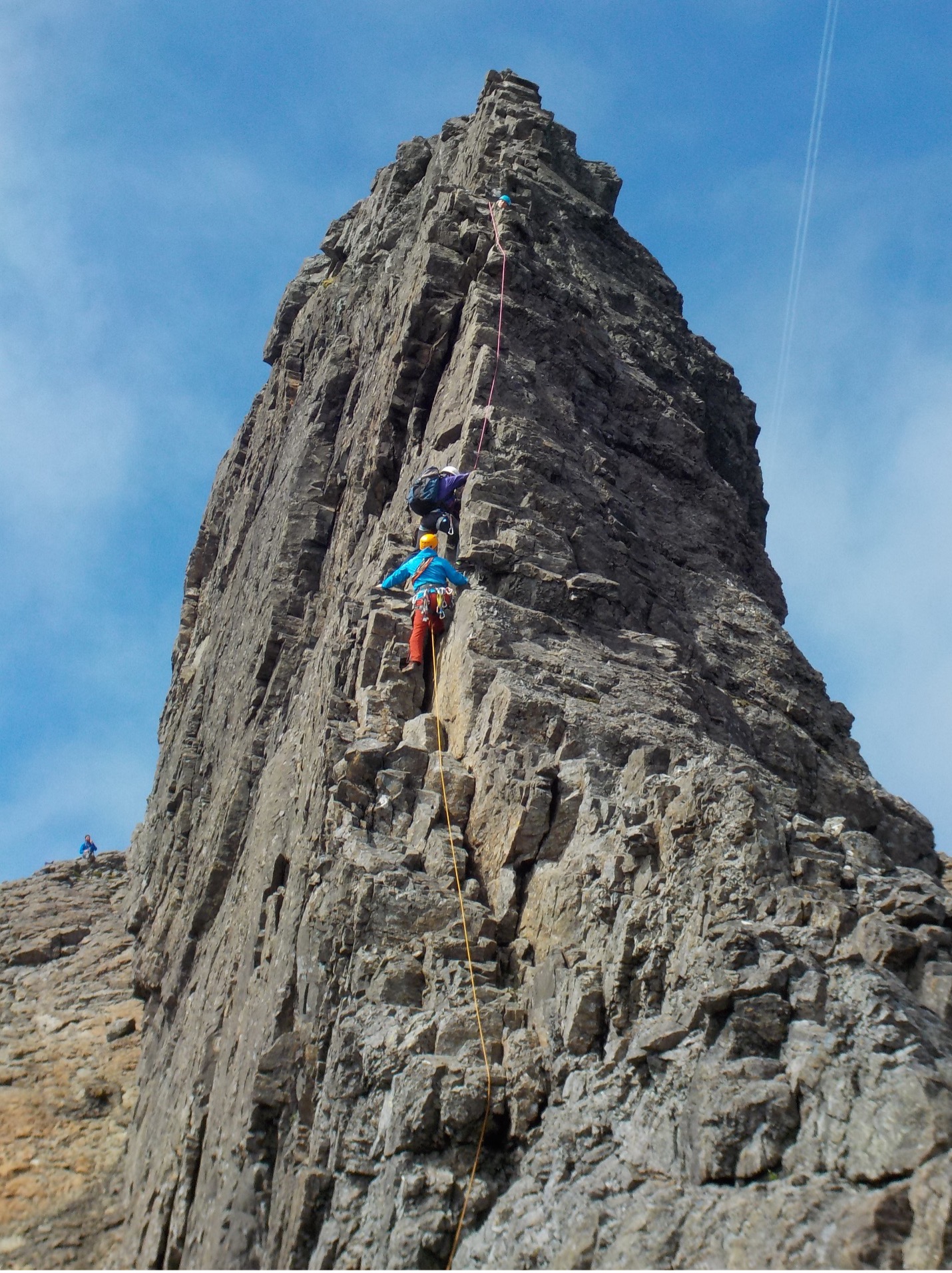 While there are a few places where one can reach two (occasionally more) Munros in a single day, most require a trek of 6+ hours, so one can only “bag” a single mountain in the day. Some peaks are sufficiently remote that one needs a long drive to get into the general area, a full day’s hike to get close, and then a wild camp for one or more nights as a base. Also, with the very short winter days in Scotland, one may need to start and/or finish in the dark, with a good headlight.
While there are a few places where one can reach two (occasionally more) Munros in a single day, most require a trek of 6+ hours, so one can only “bag” a single mountain in the day. Some peaks are sufficiently remote that one needs a long drive to get into the general area, a full day’s hike to get close, and then a wild camp for one or more nights as a base. Also, with the very short winter days in Scotland, one may need to start and/or finish in the dark, with a good headlight.
Our student years in Edinburgh (1969-72) gave me a small start on the quest for 282. Since 1972, we have lived in Canada or the USA, which meant that my total increased very slowly, and only when I was in the UK for academic reasons or visiting family. By the time I retired from McMaster in 2012 (already with 43 years of bagging behind me), I had accumulated only about half of the Munros. But retirement permitted me to make some more extended trips to Scotland, and I realised that with a push, I had a chance of getting the lot. And so, in 2017, 2018 and 2019 I spent a whole month or more each year in Scotland, climbing every day and managing about 35 peaks on each trip.
Some of my best memories include:
- Traversing the Five Sisters of Kintail in deep snow on a spectacular New Year’s Eve day, starting well before sunrise from a bothy and reaching the pub in Shiel Bridge long after dark, but just in time to join in the Hogmanay celebrations;
- A solo wild-camping trip to do a round of 5 peaks in the remote Fisherfield range (in the north-west Highlands). This required a 14-hour day on the hills, but I was rewarded with an amazing view from the summit of A’Mhaighdean, arguably the most remote Munro;
- Several challenging peaks on the dramatic Cuillin ridge on the Isle of Skye. The most famous of these is the notorious Inaccessible Pinnacle, otherwise known as the “In Pin”. This is a spiky shard of rock dropped from heaven onto the main ridge, that requires rock climbing along a narrow edge for three rope pitches. It has been described as “an overhanging drop over infinity on one side, and steeper and further on the other”! Then an abseil off the sheer face is needed to regain the main ridge. Needless to say, a guide was hired for this Munro (and several other Cuillins)! Munro himself failed to climb this mountain.
 I targeted my last Munro for the summer of 2019 (fortunately just before COVID lockdowns took hold in the UK). This was, curiously, another Ben More, on the island of Mull in the Inner Hebrides. On July 2, and almost exactly 50 years since my first summit, I reached the top, and celebrated with a small company of friends and family, including Loraine; she is not quite as crazy about Munros as I am, but she has accompanied me to about 100 summits.
I targeted my last Munro for the summer of 2019 (fortunately just before COVID lockdowns took hold in the UK). This was, curiously, another Ben More, on the island of Mull in the Inner Hebrides. On July 2, and almost exactly 50 years since my first summit, I reached the top, and celebrated with a small company of friends and family, including Loraine; she is not quite as crazy about Munros as I am, but she has accompanied me to about 100 summits.
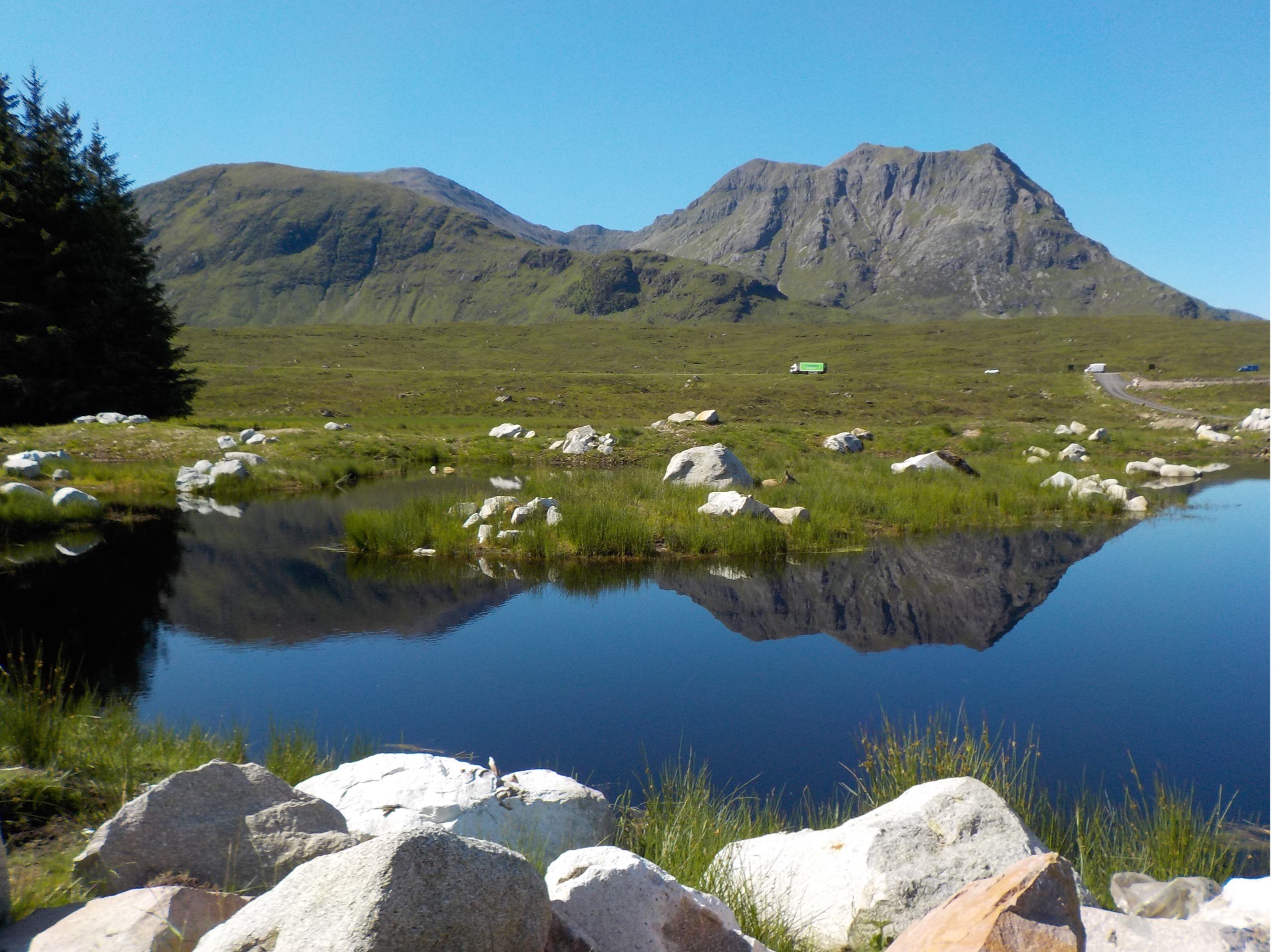 In the curious terminology of the Scottish Mountaineering Club (SMC), by climbing all 282 mountains, I had become a ‘compleationist’, a feat first achieved in 1901. I sent in all my details to the SMC, which then registered me on the list of people who have ‘compleated’ and sent a certificate to mark the occasion.
In the curious terminology of the Scottish Mountaineering Club (SMC), by climbing all 282 mountains, I had become a ‘compleationist’, a feat first achieved in 1901. I sent in all my details to the SMC, which then registered me on the list of people who have ‘compleated’ and sent a certificate to mark the occasion.
I’ve been asked, “what’s next”? Well, it has crossed my mind that the SMC had also defined 226 Munro “Tops”, which form the secondary peaks of the main mountains. But they would take me many more years to climb, so enough is enough, and we have now moved on to hiking and climbing elsewhere. It was good fun while it lasted.
Services for Students with Disabilities at McMaster
By Tim Nolan, Student Accessibility Services
As a somewhat new retiree in March 2020, I find the MURA newsletter very informative. All the news and stories are great, in particular stories about life after McMaster. I asked the MURA newsletter team if I could write a short article about the origins of student disability services at McMaster. So, briefly, here it is. If you want more detail and a few anecdotes in future issues just say the word!
In 1988 McMaster created the position of “Coordinator for the Disabled” within the Registrar’s Office (RO). I was hired as that Coordinator in November 1988, reporting to Helen Barton, Acting Registrar at that time. For the first 5 years or so the position continued under the RO. Around 1993 the service changed, reporting directly to Mary Keyes, AVP Student Affairs.
Initially, the Coordinator position was half time moving to full time in the fall of 1989. The first office was in Gilmour Hall 113, moving to GH 109, and then to Kenneth Taylor Hall 118. In 1990, I hired Donna Plonski to work with me in an administrative capacity. Donna was the first disabled grad to work with me and there would be many more over the years. After moving to KTH to become part of a new unit, Equity and Access, alongside SHADO (Sexual Harassment Anti-Discrimination) and EE (Employment Equity) the disability services (renamed Access and Ability) would hire a Learning Disabilities Coordinator and a Manager, Laurie Pearson and Bill Hoch, respectively.
In the winter of 1995 – 1996 changes were in the works. With a pending closure of the federally funded student employment services on campus, Mary Keyes moved to establish two new units out of three. Employment and career counselling merged to make the new CPEC (Career Planning and Employment Centre), while personal and academic counselling merged with Access and Ability to create the new CSD (Centre for Student Development). Both units were created as self-managed teams with no manager but rather a small executive team which would change from year to year. CSD moved into Hamilton Hall occupying space on both the 3rd and 4th floors. That new unit consisted of Bill Wilkinson, Debbie Nifakis, David Palmer, Margaret O’Hara, Noreen Myers, Caroline Cayuga, Bill Hoch, and me.
With growing demand for CSD supports and a pending double cohort, CSD moved into the new MUSC (McMaster University Student Centre) in 2002. CSD also added new personal counsellors, a larger personal counselling internship program, and new disability staff, and supports such as conversion of texts and custom courseware to electronic format, test and exam support, volunteerism, notetaking, and specific supports for students with learning disabilities grew. The newest staff were, among others, Marge Marriott and Julia Shelley.
Students’ needs made manual operations virtually impossible, so CSD developed, along with Computer Science student assistance, the first version of an electronic scheduler and database now called Clockwork. Chris Jennings, our tech support, provided guidance on development along with Mike Dinunzio, who eventually took over for Chris as a Clockwork student developer. Learning Disability programming brought Nancy McQuigge and Kim Shaw to CSD disability services. Test and exam demand support brought Ann Mays and April Beresford aboard. More staffing and service changes occurred than can be reported here, making CSD a dynamic and busy place that challenged the self-managed team concept.
Phil Wood, taking on the role of AVP Student Affairs in 2002, converted CSD to a typical operating structure with the hiring of Desmond Pouyat as CSD’s director in early 2003. The double cohort was actively increasing the numbers of students accessing disability services. The number of students with a mental health disability was on the rise and so too was interactive information technology. The university was growing in so many ways that Desmond appointed me the disability lead for CSD in the spring of 2004, and then Manager of Disability Services and University Advisor on Disability Issues in 2005. The Ontarians with Disabilities Act required the university to dedicate more attention to accessibility and prevention of barriers to access. CSD relied more and more upon its Clockwork system, establishing on-line registration for disability services, letters of accommodation, and notetaking support. The university paid a lot of attention to improving accessibility across campus with more ground level access, new and retrofit accessible construction, more accessible parking, and accessible washrooms in every building on campus. Disability staffing increased, as did the amount of test/exam space and invigilation by CSD. CSD was given space in the basement of the Commons building for support to students with learning disabilities, including assistance with technology.
The CSD operation changed in 2010, with academic counselling moving to a new Student Success Centre, and personal counselling to the new Student Health and Wellness Centre.
By 2011 disability services had become a stand-alone unit, Student Accessibility Services (SAS), occupying most of the MUSC B107 office.
The Commons building space was converted to a testing centre shortly thereafter, supervised by April Beresford. By this time, the number of students with disabilities being served was in the thousands, with an increase in the number of tests and exams administered by the new SAS, a high demand for notetaking, and a growing need for accommodation of students in graduate programs and in Health Sciences. The new SAS increased its staffing to the low teens, and began to use evening hours and shared offices to accommodate support without new space. In the mid 2010’s, SAS revised its service model, eliminating Disability Coordinator Specialists and assigning students to a Coordinator based on staff availability rather than a student’s disability. Staff-to-student caseload ratios grew from 1 – 100 to 1 – 300 or more. When Student Health Services moved to the new Peter George Centre for Living and Learning, thereby vacating MUSC B101, B101 was converted to test and exam accommodation space for SAS.
I retired on March 1, 2020. When I joined McMaster as “Coordinator for the Disabled” in 1988, it was a one-person operation, a 0.5 FTE position, in an office in Gilmour Hall. When I retired, SAS had a staff complement of 18+ FTE with space for further growth, and would occupy all of MUSC B107 and B101. The budget had grown from $0 in 1988 to more than $2M in 2020. Who could have forecast the magnitude of change over the years? So much of this journey is not reported here but could be should there be interest.
Thank you for letting me tell you about the journey of disability services at McMaster.
Friendship
by Ellen Ryan
Friendship isn’t a big thing – it’s a million little things.
~ Paulo Coelho
A high point of my life, at age 65, was hearing my 97-year-old friend Naomi say, ”Oh, Ellen, you’re a wonderful kid.” I had edited her book of poems, which she was now giving away with delight.
In our age-stratified society, it is often difficult to make friends from other generations. And reaching traditional retirement age did not prepare me for being thought of as younger. Surprise is one important aspect of friendship.
Another feature is shared experience and collaboration. In retirement we meet former colleagues for coffee or for lunch – either in pairs or in small groups. We form friendships through book clubs, woodworking groups, and sports teams. We also connect through accompanying our children and later our grandchildren to their regular activities. We keep in touch with neighbours and often travel long distances to visit former neighbours. Sometimes we find good travel companions and arrange repeated trips with them.
One of my favourite activities with a friend is what I call “Walk ‘n’ Talk”.
It is easy to communicate when moving in nature, looking ahead. Minimal eye contact facilitates listening and embarking on difficult topics. The pumping of legs, stroll or quick march, creates a forward rhythm that energizes a conversation, even while gracing silent gaps. Breathing with trees – perhaps vistas – opens spaces in our hearts to show vulnerability. Acceptance, the universal currency of real friendship, flows readily.
***
We can have many friends
each in their specific niche
on our friendship wall
one for long walks in retirement
one for evening exercise
brisk walks at lunch on work days
one who spurs creativity
writing or quilting or folk dancing buddy
work-mate, classmate, sailing mate
an in-law who helps us
understand our spouse
one for laughs at the cottage
a nudge to bend, or stand up for rights
to set goals or slow down
inspiring us to be our better selves
one who listens in the night
exchanges stories, remembers our best
even reminding us of them
one who sits with us in grief
in confusion, holds our hand
in crisis, rallies all our friends
***
Here’s to our friends – longtime or new, far or near, still living or dead – and to our courage to continue reaching out, listening, and nurturing.
Useful Resources
Coping With the Death of Old Friends and Siblings
How to find friends and fight loneliness after 60
10 Tips for Making Friends at Any Age
|
MURAnews is produced by MURA members Denise Anderson (Production Editor), Helen Barton (News Editor), Nora Gaskin, John Horsman, and Marcia MacAulay. We welcome submissions from MURA members. Contributing writers: Dawnelle Hawes, Kathy Overholt, and Ellen Ryan. |
© 2025 McMaster University Retirees Association | Having trouble with this site? Contact our Webmaster. |
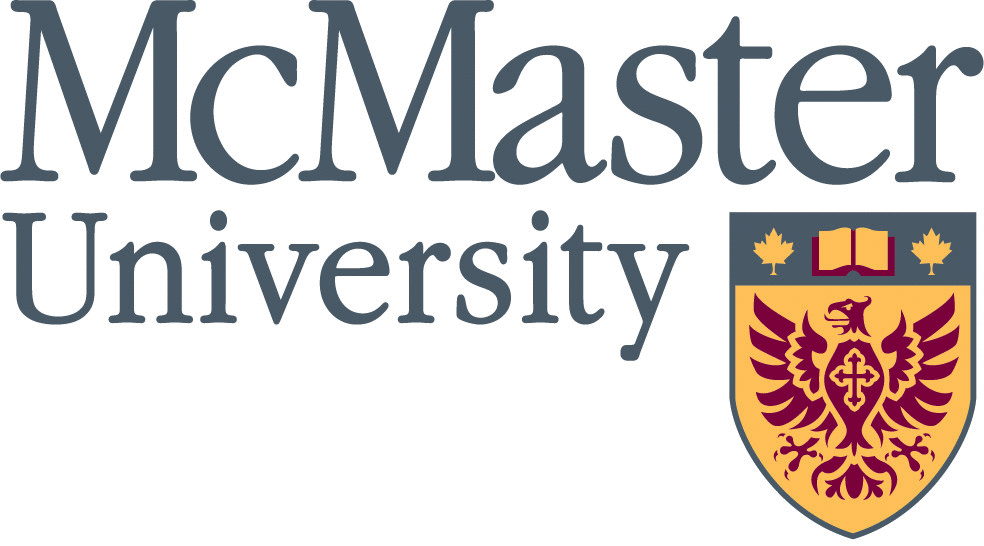
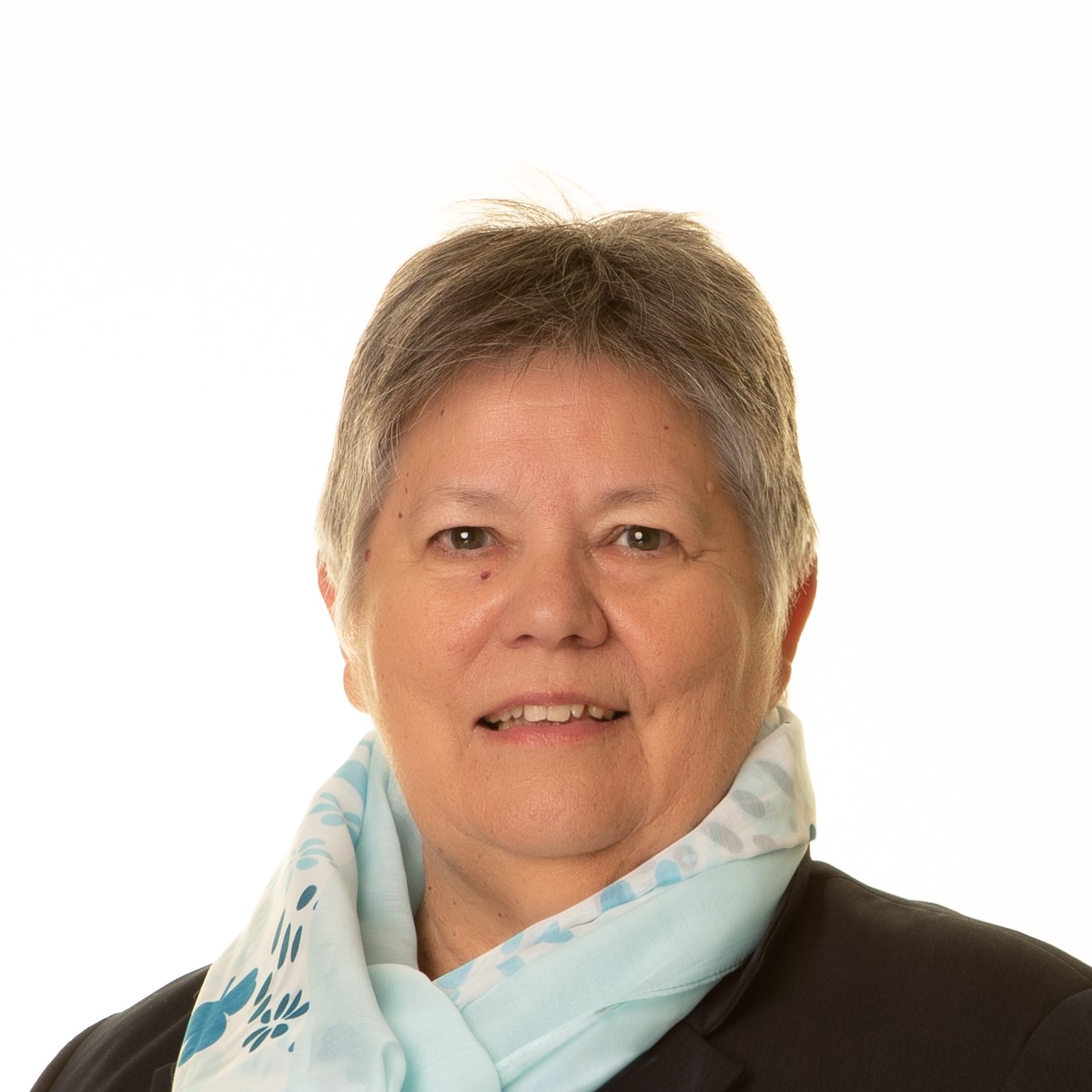 The summer weather has truly left us, and we are starting to do the chores that signal preparation for winter. As I write this, I am watching leaves drift down from the trees in my yard and know that means raking will soon begin. Fall also means that your MURA council has started its work for the year in earnest. We had our first event of the fall – a virtual tour of the McMaster Museum of Art, led by the Museum’s Education Officer, Teresa Gregorio. For the almost 25 pieces Teresa showed us, she chose those that give her joy - they represented various media, cultures, ages, and genders. Teresa noted that the average length of time that people view art in a gallery is seven seconds. She encouraged us to look longer in order to see more details and gain a better perspective. The Museum of Art is now fully open and has a number of exhibitions this fall and winter. More information is available on their
The summer weather has truly left us, and we are starting to do the chores that signal preparation for winter. As I write this, I am watching leaves drift down from the trees in my yard and know that means raking will soon begin. Fall also means that your MURA council has started its work for the year in earnest. We had our first event of the fall – a virtual tour of the McMaster Museum of Art, led by the Museum’s Education Officer, Teresa Gregorio. For the almost 25 pieces Teresa showed us, she chose those that give her joy - they represented various media, cultures, ages, and genders. Teresa noted that the average length of time that people view art in a gallery is seven seconds. She encouraged us to look longer in order to see more details and gain a better perspective. The Museum of Art is now fully open and has a number of exhibitions this fall and winter. More information is available on their 

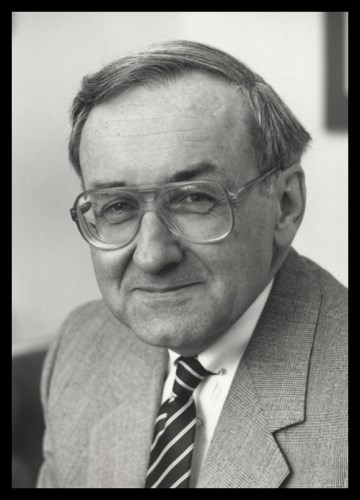 Jack Evans spent many years representing MURA in the long struggle to reach agreement on the equitable distribution of the excess pension surplus. MURA President from 1995 to 1997, Jack spent most of his presidency and several years beyond ensuring that retirees, and those nearing retirement, received a fair portion of the pension surplus.
Jack Evans spent many years representing MURA in the long struggle to reach agreement on the equitable distribution of the excess pension surplus. MURA President from 1995 to 1997, Jack spent most of his presidency and several years beyond ensuring that retirees, and those nearing retirement, received a fair portion of the pension surplus.